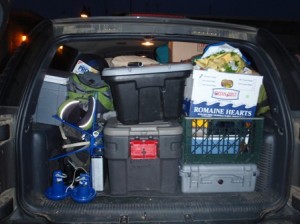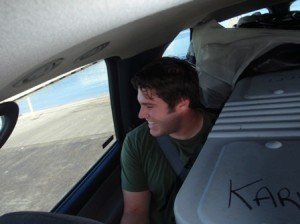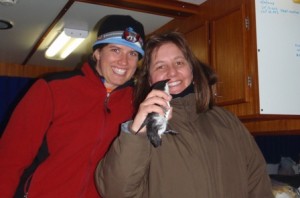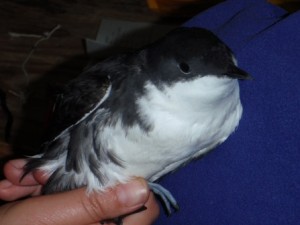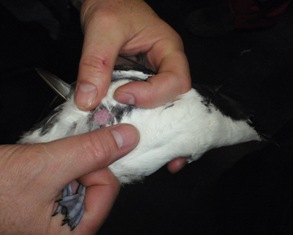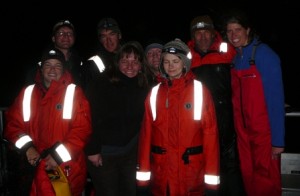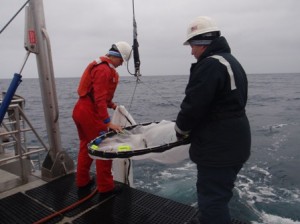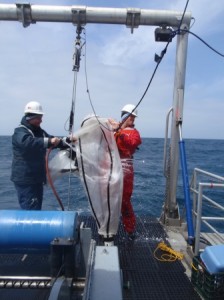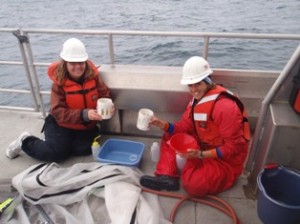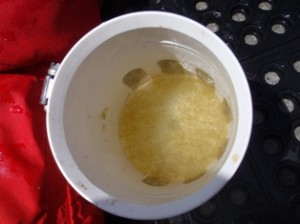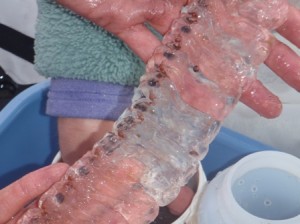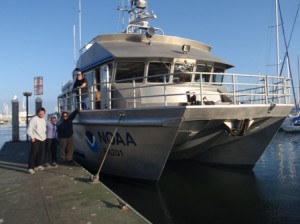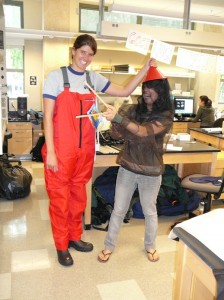The most important part of our study was counting seabirds and marine mammals around Santa Barbara Island. We repeated surveys along the transect lines originally done by G.L. Hunt, Jr. in 1976. Whenever the boat was underway, we recorded all seabirds within 200m of our boat. To determine where 200m was, we used trigonometry—measurements of eye-height and arm length led to little marks on personalized dowels. Cool trick.
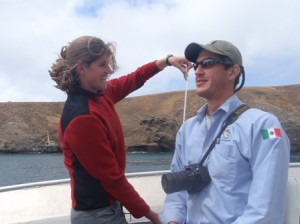
Kristen measuring Eduardo Prieto, the biologist from Guadalupe Island, Mexico, for the 200m dowel markings. SBI is in the background.
Each bird was entered with their 4-letter species code (Xantus’ murrelets= XAMU), and their behavior- on sitting on the water, feeding, flying N, etc. We also recorded all marine mammals and anything cool that was out of our transect zone.
           To keep a running list of observations, we used the program Flock on these old Husky Computers (water proof! Tough! Couldn’t ask for much more!) By entering the latitude and longitude at the start and end of the line, the program plots where each of the observations was on each transect. Our goal is to make density maps of bird species.
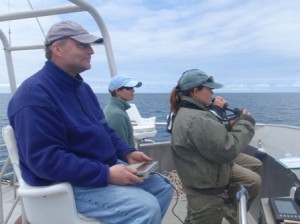
From left to right: Harry Carter, Dani Lipski, and Laurie Harvey surveying seabirds from the flying bridge. Harry is holding the Husky computer.
Â
           Fun things we saw while observing:
-
Lots of Xantus’ murrelets!
-
Mola mola sunfish! (3 of them!)
-
Gray whales- it was the first time I had ever seen a whale! (outside of Sea World) and humpback whales breaching!
-
Lots of sea lions. There is a California Sea Lion (CASL) colony on Santa Barbara Island, so they were all over the place.
-
Bottlenose and one pod of 50+ Pacific white-sided dolphins! They liked to ride the wave under our bow.
-
A black-footed albatross!
And we got to sit on the flying bridge for bird obs- which was great. Nothing like the sea wind blowing through your hair.
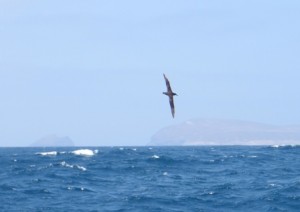
A black-footed albatross riding the wind with Santa Barbara Island in the background.

